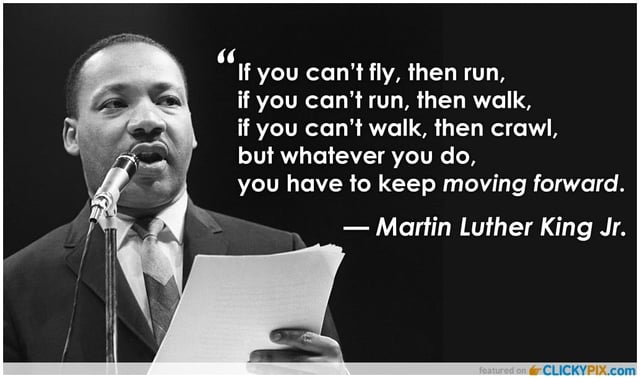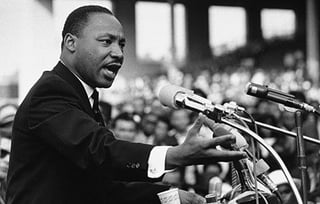Next week we will take the time to celebrate the life and legacy of Dr. Martin Luther King, Jr. His message of calling people from all walks of life to work together in support of the common good is just as pertinent now as it was then. As we prepare to talk to our students about what Dr. King stood for, here are some digital tools to bring his words and ideas to life in your classroom. This round up will enhance your students’ ability to study his role in the Civil Rights Movement while inspiring them to participate as upstanders in their own communities.

1. Explore How Dr. King Used Technology to Get His Message Out
In the collection, A Time to Break Silence: The Essential Works of Martin Luther King Jr., for Students, readers learn that Dr. King not only utilized civil disobedience and non-violent protest to mobilize citizens and advocate for equality, but he also took advantage of the then-emerging technology, television. The book, which collects a wide array of his speeches on different topics and from different moments in his career, can spark an interesting classroom discussion on the role of media in the Civil Rights Movement. (To watch a recorded webinar about the collection please click here). Television helped Dr. King gain support, draw in the disenfranchised, and change how people thought and acted on issues of equality:
“Southern newspapers often reported news about the protests in a way that was favorable to the local white community. But Dr. King saw that the then-new medium of television was showing segregation for what it really was. Day after day people across the United States were seeing peaceful, nonviolent people of color being harassed by young white toughs based purely on the color of their skin.”
It was important for the success of the movement that the national media capture the brutality and hatred of local police and communities toward peacefully protesting youth. In this video from PBS, you can hear from people who joined the movement at a young age and see how the media covered the hostility they encountered:
Here are some teaching strategies to help students analyze iconic images from the time while developing Media Literacy skills.
Connection Questions
- What role did the media have on issues of social justice in Dr. King’s time?
- What impact did young people have in the fight for equality?
2. Discover Digital Resources to Understand Media as a Tool for Social Change
Inspired by Dr. King’s understanding that media is an important tool for social change, here are two digital resources to help students dive into the history of the Civil Rights Movement and Dr. King’s important role within that history:
 Freedom’s Ring: Dr. King’s “I Have a Dream” Speech
Freedom’s Ring: Dr. King’s “I Have a Dream” Speech
Compare written and spoken versions of Dr. King’s speech, explore multimedia images, listen to movement activists, and uncover historical context in this animated presentation of one of his most famous speeches. Encourage students to consider how the echoes of his words live within each of them.
The King Center Digital Archive
There are nearly a million documents associated with the life of Dr. King. Discover letters, speeches, telegrams, and more.
Connection Activities
- Dr. King’s speeches include many historical, biblical, and social references. Have students make an annotated “Story Board” version of one of Dr. King’s speeches, like the one on Freedom’s Ring, then consider the question, “How do these references change our understanding of the speech?”
- One of his most famous “speeches” was actually a letter he wrote from his cell in Birmingham Jail. Other speeches he delivered verbally. What is the difference between these two types of communication? What must an author do to make sure the message is understood, whether written or spoken?
3. Use Digital Tools to Apply Dr. King’s Lessons to Today
Looking back and studying the history of Dr. King is not the end of our task as educators. Martin Luther King, Jr. Day is officially recognized as “a day on, not a day off,” encouraging all of us to participate in service to make our world a more just and equal place. Help students connect and spread awareness with these suggested sites:
- Witness.org uses the power of video and storytelling to spread the message about human rights violations. Students can explore videos here, as well as find tips for creating their own videos. And check out these tips on how to report your own story.
- DoSomething.org helps young people advocate for social change through national campaigns. Other online platforms can help students learn about starting petitions.
How do you mark the legacy of Dr. Martin Luther King, Jr.? Comment below with your favorite resource, activity, or strategy.
*Editor's Note: This post was originally published in January 2014 and has been updated for accuracy and comprehensiveness.

